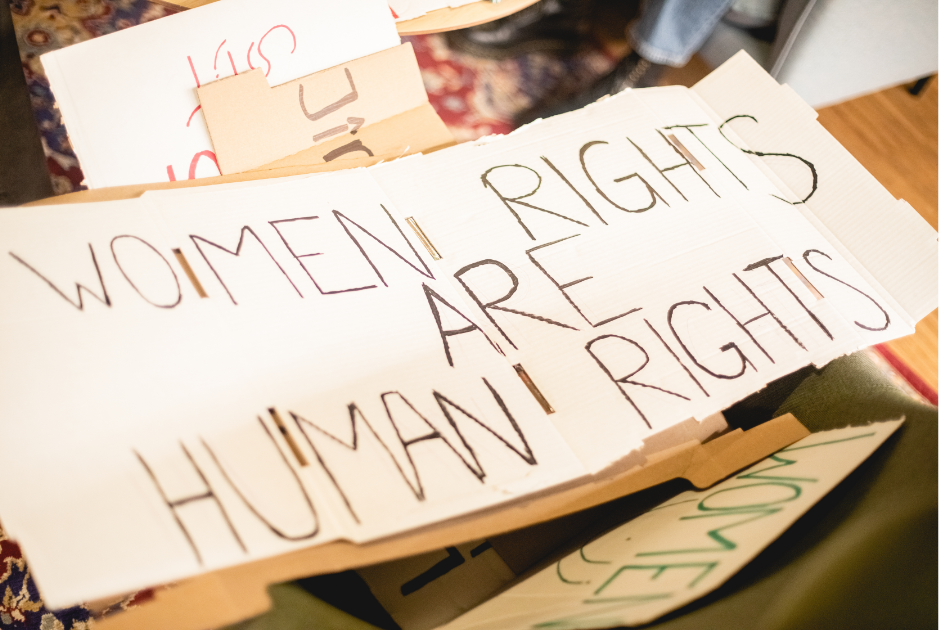This popular video of weird jiggly grass in Russia looks cool, but what is it really?
So this is weird.
The ground in Russia is ... jiggly?

GIF from Siberian Times/YouTube.
This video was posted on July 20, 2016, on the Siberian Times' YouTube page. And as of this writing, it's had over a million views, probably because it's a super weird and curious phenomenon.
So what the heck is going on? Is this an optical illusion? A mass of jelly under the grass?
Basically, this piece of ground is the Earth's equivalent of a giant water bed.
Though the video's title calls it a methane bubble, this Wired article is on point in its declaration that we're basically seeing the Earth's version of a giant water bed.
Up that far north, the ground often freezes solid for months. Some of the ground actually never melts at all and is known as permafrost. In the summer, when the top layer of ground thaws, some of the water can get trapped between the deeper permafrost layer and vegetation (like this grass), forming the wiggly, jiggly mass you can see in the video.
The video was made by two Russian researchers, Alexander Sokolov and Dorothee Ehrich, during a research trip to the remote Bely Island above the Arctic Circle. There, they found 15 of these mysterious patches.
This isn't the only weird thing happening on the tundra, by the way.
Though we usually only hear about the tundra on shows like "Ice Road Truckers," there have been some pretty cool findings there lately. For example, scientists recently found several mammoths, wooly rhinos, and other extinct animals.
Mammoth skeleton from Siberia. Photo from Kazuhiro Nogi/AFP/Getty Images.
We've even been able to revive ancient, frozen plants and giant viruses.
Also, did I mention that there are explosions and flammable lakes?
Yeah, there are explosions and flammable lakes.
GIF from University of Alaska Fairbanks/YouTube.
Remember how the jiggly-grass video was labeled as a methane bubble? Turns out that the methane bubbles idea isn't so far-fetched.
When frozen soil thaws, microbes in the soil start eating it and kind of poop out methane, a flammable gas. Sometimes it bubbles up naturally (the Russian scientists detected some methane in their water beds, for example), but sometimes it gets trapped under the soil or under lake ice. And if too much pressure builds up, it might pop like a giant balloon.
These weird phenomena may become more common in the future.
Generally, there's a natural rhythm to the seasons. And these weird happenings are, to some extent, just natural things that happen in the tundra.
But there is also evidence that, thanks to climate change bringing bigger and bigger thaws each year, more and more stuff might change.
For example, we've built a lot of our infrastructure, like buildings and oil pipelines, on frozen soil. If that melts, those structures might fall apart. Also, that methane that can bubble up? Yeah, turns out it's a greenhouse gas, just like carbon dioxide, which is pretty bad for the environment.
This jiggly grass could actually be kind of an important sign. One patch by itself isn't bad, but because more earthy water beds could be tied to global warming, we should definitely keep an eye on them.
Basically, if we can slow down climate change, we can keep the natural rhythm of the seasons going strong. Hopefully, that'll also keep our random jiggly wiggly water beds and exploding lakes in check.





 What was I doing again?
What was I doing again? A space waitress at work.
A space waitress at work.  Waking Up Funeral GIF
Waking Up Funeral GIF Rihanna Nails GIF
Rihanna Nails GIF Yoga pants.Image via Canva.
Yoga pants.Image via Canva. Our natural lashes are nice just the way they are!
Our natural lashes are nice just the way they are! One step forward, many steps back. Image via Canva.
One step forward, many steps back. Image via Canva.  Homelessness is especially rampant on the West Coast.Image via Canva
Homelessness is especially rampant on the West Coast.Image via Canva